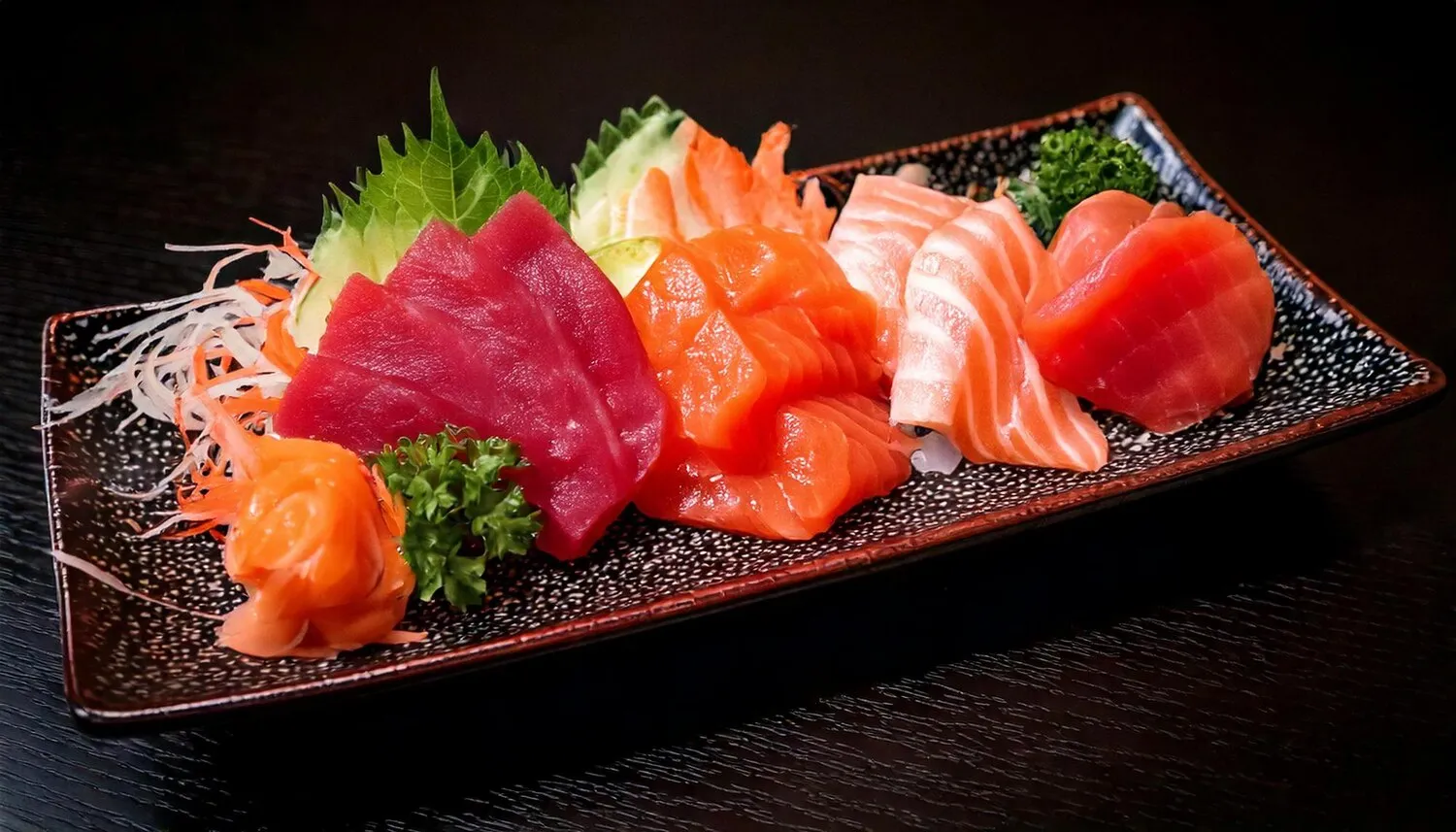
Sashimi
Sashimi is a Japanese delicacy consisting of very fresh raw seafood or meat sliced into thin pieces and served with only soy sauce and wasabi or ginger.
Nutrition Facts
* The % Daily Value (DV) tells you how much a nutrient in a serving of food contributes to a daily diet. 2,000 calories a day is used for general nutrition advice.
The exact origins of sashimi are difficult to pinpoint, but it is believed to have evolved from a practice of preparing raw fish for consumption, likely influenced by Buddhist beliefs that discouraged cooking meat. Over centuries, preparation techniques became more refined, and the dish became more associated with the upper classes before becoming widely available.
Sashimi is more than just food; it's an integral part of Japanese culinary culture, representing simplicity, freshness, and respect for ingredients. It's often served during special occasions and formal meals, showcasing the chef's skill and the quality of the seafood.
Presentation and Aesthetics
The presentation of sashimi is highly valued, reflecting the Japanese appreciation for beauty and balance. Chefs carefully arrange the slices of fish on a plate, often incorporating edible garnishes like shiso leaves, daikon radish, and seaweed to create a visually appealing and harmonious composition.
Respect for Ingredients
Sashimi embodies a profound respect for the natural flavors of the fish. Minimal seasoning and preparation techniques are used to allow the inherent qualities of the seafood to shine through. The quality of the fish is paramount, and chefs take great care to source the freshest and most flavorful ingredients.
Dining Etiquette
There are certain etiquette rules associated with eating sashimi, such as using chopsticks to pick up the pieces and dipping only the fish (not the rice if served as part of a set meal) into soy sauce. Avoid mixing wasabi directly into the soy sauce, as this is considered impolite.
Sashimi offers a delicate and nuanced flavor profile that emphasizes the natural taste of the seafood. The clean, fresh taste of the fish is enhanced by subtle umami notes and a hint of saltiness, complemented by the pungent bite of wasabi and the cleansing aroma of ginger.
The main flavor profile is heavily dependent on the type of fish used. Tuna sashimi, for instance, can range from the rich, fatty taste of otoro (belly) to the leaner, more robust akami (red meat). Salmon sashimi offers a buttery texture and a distinctive salmon flavor. White fish like snapper or sea bass are typically milder and have a delicate sweetness. Soy sauce provides a salty umami base, while wasabi adds a sharp, sinus-clearing heat. Ginger acts as a palate cleanser and offers a refreshing contrast to the richness of the fish.
Freshness is Key
The most important factor in enjoying sashimi is the freshness of the fish. Look for sashimi that has a vibrant color and a firm texture. Avoid fish that looks dull, slimy, or smells strongly of fish.
Pairing with Beverages
Sashimi pairs well with a variety of beverages, including sake, Japanese beer, and white wine. The clean, crisp flavors of these drinks complement the delicate flavors of the fish.
Start with Lighter Flavors
When enjoying a sashimi assortment, it's generally recommended to start with the lighter-flavored fish, such as white fish, and then move on to the richer, fattier varieties like tuna or salmon. This allows you to fully appreciate the nuances of each type of fish.
Wasabi Usage
Apply a small amount of wasabi directly to the sashimi rather than mixing it into the soy sauce. This allows you to control the level of spiciness and experience the wasabi's flavor alongside the fish.
Explore additional Raw Seafood dishes and restaurants
Explore Raw SeafoodDiscover top dining spots and culinary experiences in Luzern.
Explore LuzernLearn more about the food culture, restaurant scene, and culinary heritage of Switzerland.
Explore Switzerland